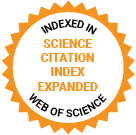Journal of Medical Internet Research
The leading peer-reviewed journal for digital medicine and health and health care in the internet age.
Editor-in-Chief:
Gunther Eysenbach, MD, MPH, FACMI, Founding Editor and Publisher; Adjunct Professor, School of Health Information Science, University of Victoria, Canada
Impact Factor 5.8 CiteScore 14.4
Recent Articles

Stroke is a leading cause of long-term disability, often resulting in upper extremity dysfunction. Traditional rehabilitation methods often face challenges such as limited patient access to resources and lack of sustained motivation. Home-based virtual reality (VR) training is gaining traction as an innovative, sustainable, and interactive alternative. However, the effect of home-based VR, specifically for upper extremity recovery in patients with stroke, remains insufficiently explored.

Due to the complicated nature of Parkinson disease (PD), a number of subjective considerations (eg, staging schemes, clinical assessment tools, or questionnaires) on how best to assess clinical deficits and monitor clinical progression have been published; however, none of these considerations include a comprehensive, objective assessment of all functional areas of neurocognition affected by PD (eg, motor, memory, speech, language, executive function, autonomic function, sensory function, behavior, and sleep). This paper highlights the increasing use of digital health technology (eg, smartphones, tablets, and wearable devices) for the classification, staging, and monitoring of PD. Furthermore, this Viewpoint proposes a foundation for a new staging schema that builds from multiple clinically implemented scales (eg, Hoehn and Yahr Scale and Berg Balance Scale) for ease and homogeneity, while also implementing digital health technology to expand current staging protocols. This proposed staging system foundation aims to provide an objective, symptom-specific assessment of all functional areas of neurocognition via inherent device capabilities (eg, device sensors and human-device interactions). As individuals with PD may manifest different symptoms at different times across the spectrum of neurocognition, the modernization of assessments that include objective, symptom-specific monitoring is imperative for providing personalized medicine and maintaining individual quality of life.

Artificial intelligence (AI)–enabled decision support systems are critical tools in medical practice; however, their reliability is not absolute, necessitating human oversight for final decision-making. Human reliance on such systems can vary, influenced by factors such as individual psychological factors and physician experience.


The health care sector contributes notably to environmental harms, impacting human and ecosystem health. Hence, countries increasingly set ambitions to transition to environmentally sustainable health care, focusing on resource use, energy consumption, and patient travel. Telemedicine is often considered a promising solution to reduce travel-related carbon emissions. However, underlying environmental impact assessments lack important components such as staff travel and fail to adhere to standardized conduct and reporting. Moreover, assessments of telemedicine use in primary care are scarce.

The global aging population faces great challenges. Wearable activity trackers have emerged as tools to promote physical activity among older adults, potentially improving health outcomes. However, the effectiveness of such interventions on physical activity, body composition, and physical function among community-dwelling older adults remains debated.


People living with HIV/AIDS face multiple challenges that collectively impede their adaptation outcomes. These outcomes include quality of life (QoL), acceptance of illness, mental health (including symptoms of anxiety and depression), and antiretroviral therapy (ART) adherence. While existing evidence addresses specific challenges, it often overlooks the interactions among the various problems people living with HIV/AIDS encounter. The comprehensive-task disease management framework and positive self-management framework provide a theoretical basis for understanding the adaptation process. A culturally tailored, theory-based intervention may be necessary and effective in facilitating better adaptation outcomes for people living with HIV/AIDS.

Patients’ electronic access to their health information can improve long-term health outcomes. Few studies have evaluated barriers that may limit access to portal health information before the COVID-19 pandemic such as preference for in-person visits, lack of perceived need to use a patient portal system, and lack of comfort or experience with computers. With the increased use of telehealth during the pandemic, patients’ comfort with portal applications and digital health literacy has improved.
Preprints Open for Peer-Review
Open Peer Review Period:
-
Open Peer Review Period:
-



















